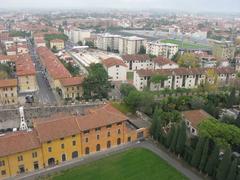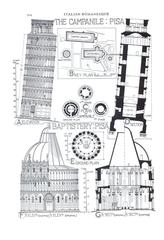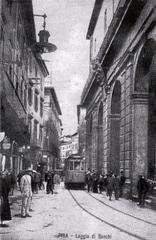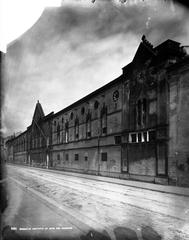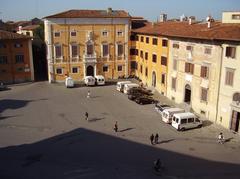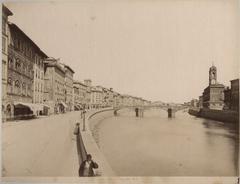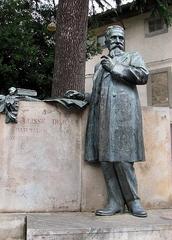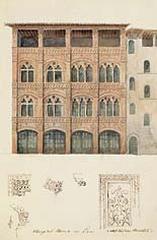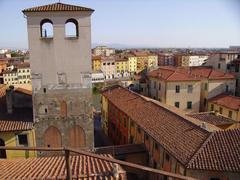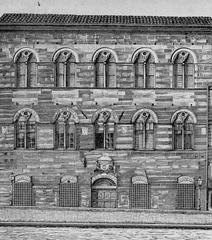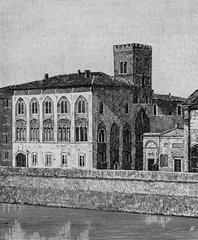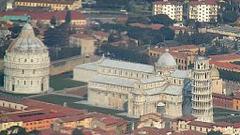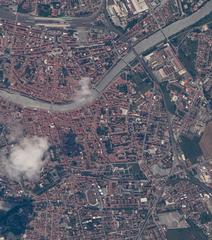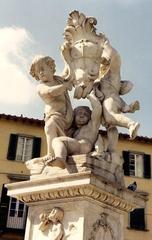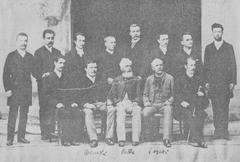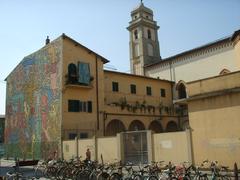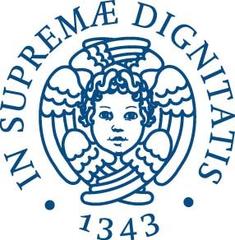Monument to Pietro Leopoldo I in Pisa, Italy: Visiting Hours, Tickets, and Visitor Guide
Date: 14/06/2025
Introduction: Historical and Cultural Significance
The Monument to Pietro Leopoldo I, located in Pisa, Italy, stands as a prominent symbol of the city’s enlightened past and enduring civic pride. Erected in the early 19th century, the monument honors Grand Duke Pietro Leopoldo d’Asburgo Lorena, whose reign from 1765 to 1790 ushered in a transformative era of legal, social, and economic reform. Notably, Pietro Leopoldo made history in 1786 by abolishing torture and the death penalty, making Tuscany the first state in the world to implement such reforms and cementing his reputation as a leader inspired by Enlightenment ideals (Il Giornale d’Italia; Visit Tuscany).
Strategically positioned in Piazza Martiri della Libertà, the monument not only commemorates a pivotal ruler but also embodies Pisa’s tradition of celebrating public virtue through art. The statue, sculpted by Luigi Pampaloni with bas-reliefs by Emilio Santarelli and Temistocle Guerrazzi, reflects the neoclassical style and serves as a focal point for civic life, inviting locals and visitors alike to reflect on the city’s progressive heritage.
This comprehensive guide details the monument’s origins, artistic features, practical visitor information—including hours, accessibility, and tickets—and its role within Pisa’s rich urban and cultural landscape. Whether you are drawn by history, art, or the city’s vibrant atmosphere, the Monument to Pietro Leopoldo I offers a unique perspective on Pisa’s past and present (Italia.it; finestresullarte.info).
Contents
- Historical Origins and Commissioning
- Pietro Leopoldo I: The Grand Duke of Reform
- Artistic Creation and Symbolism
- Visiting the Monument: Hours, Tickets & Accessibility
- Nearby Attractions
- Artistic and Architectural Details
- Role in Pisa’s Cultural Heritage
- Commemorative Events and Modern Recognition
- FAQs
- Summary of Key Facts
Historical Origins and Commissioning
The Monument to Pietro Leopoldo I arose from Pisa’s desire to honor enlightened governance. Its story begins with the transformation of what is now Piazza Martiri della Libertà, once the site of the Monastery of San Lorenzo. The monastery was repurposed and later demolished around 1815, paving the way for redevelopment. In 1817, a competition led to a new design for the area, though only partially realized due to funding constraints. By 1827, architect Alessandro Gherardesca created a lawn encircled by avenues and marble markers, placing a marble column at its center (Wikipedia).
In 1829, a civic committee began fundraising to replace the column with a statue honoring Pietro Leopoldo, reflecting the city’s admiration for his reforms. Luigi Pampaloni was chosen as sculptor, and the monument was inaugurated in 1833, with the surrounding benches completed in 1835.
Pietro Leopoldo I: The Grand Duke of Reform
Grand Duke Pietro Leopoldo d’Asburgo Lorena, who ruled Tuscany from 1765 to 1790, is remembered as an enlightened reformer. His governance was guided by the principle of “pubblica felicità” (public happiness), resulting in groundbreaking policies such as the abolition of torture and the death penalty in 1786 (Il Giornale d’Italia).
His reforms extended to agriculture, commerce, and local administration, reducing bureaucratic divisions and modernizing the region. These changes, inspired by direct engagement and the motto “conoscere per governare” (know in order to govern), shaped Tuscany’s development and are still influential today.
Artistic Creation and Symbolism
The monument’s neoclassical white marble statue, sculpted by Luigi Pampaloni, stands on a pedestal with bas-reliefs by Emilio Santarelli and Temistocle Guerrazzi. The reliefs depict the restoration of agriculture and commerce, and the protection of the arts—central themes of Pietro Leopoldo’s rule. The monument’s placement at the heart of the piazza underscores its role as a symbol of enlightened leadership and civic unity (Wikipedia).
Visiting the Monument: Hours, Tickets & Accessibility
- Visiting Hours: The monument is located in an open-air public square and is accessible 24 hours a day, year-round.
- Tickets: There is no entry fee; visiting the monument is free.
- Accessibility: The square and monument area are wheelchair accessible, with paved walkways and benches.
- Travel Tips: Visit early in the morning or late afternoon for the best light and fewer crowds. The monument is easily reached via Pisa’s public transport or on foot from Pisa Centrale station.
Nearby Attractions
While exploring the Monument to Pietro Leopoldo I, consider visiting these nearby Pisa highlights:
- Leaning Tower of Pisa & Piazza dei Miracoli: World-renowned architectural ensemble, about a 10-15 minute walk away.
- Museo Nazionale di San Matteo: Rich collection of Tuscan art and artifacts.
- Palazzo Gambacorti: Pisa’s historic town hall.
- Palazzo Blu & Teatro Verdi: Venues for art exhibitions and performances.
- Lungarni: Picturesque riverbanks perfect for strolls (finestresullarte.info).
Artistic and Architectural Details
The monument is a prime example of neoclassical sculpture, with Luigi Pampaloni’s marble statue symbolizing purity and permanence. The bas-reliefs provide narrative scenes that highlight the Grand Duke’s reforms in agriculture, commerce, and the arts, integrating artistry with historical storytelling. The surrounding benches and tree-lined piazza create a harmonious and contemplative setting.

Role in Pisa’s Cultural Heritage
The monument is an integral part of Pisa’s historic landscape, serving as a focal point for civic events, commemorations, and cultural activities (Italiamia). It stands not only as a memorial to a visionary ruler but also as a living site where the ideals of justice, progress, and public welfare are celebrated.
Commemorative Events and Modern Recognition
Anniversaries of Pietro Leopoldo’s reforms are regularly marked by scholarly events, public ceremonies, and educational initiatives. The 260th anniversary of his accession in 2025 involves a series of commemorations, reinforcing the monument’s role as a living symbol of Tuscan identity (Intoscana).
Frequently Asked Questions (FAQ)
Q: What are the Monument’s visiting hours?
A: The monument is accessible 24/7 in its open public square.
Q: Is there an entry fee?
A: No, the monument is free to visit.
Q: Is the monument accessible for people with disabilities?
A: Yes, the area is wheelchair-friendly with paved paths.
Q: Are guided tours available?
A: Yes, many Pisa tours include the monument; check with local operators for details.
Q: What are some nearby attractions?
A: The Leaning Tower, Piazza dei Miracoli, Museo Nazionale di San Matteo, and Palazzo Gambacorti.
Summary of Key Facts
- Location: Piazza Martiri della Libertà, Pisa, Italy (Wikipedia)
- Inauguration: 1833 (statue), 1835 (benches)
- Sculptor: Luigi Pampaloni
- Bas-reliefs: Emilio Santarelli, Temistocle Guerrazzi
- Architectural Design: Alessandro Gherardesca
- Commemorates: Pietro Leopoldo d’Asburgo Lorena, Grand Duke of Tuscany (1765–1790)
- Significance: Celebrates legal, social, and economic reforms; abolition of torture and death penalty
- Contemporary Role: Civic monument, site for events, symbol of enlightened governance
For more images, see Wikimedia Commons.
Practical Tips for Visitors
- Getting There: The monument is a short walk from Pisa Centrale station or accessible via local buses.
- Best Time to Visit: Early morning or late afternoon.
- Photography: Optimal lighting during golden hours; benches and open areas provide excellent vantage points.
- Combine Visits: Include the Leaning Tower, Lungarni, and other nearby sites for a full Pisa experience.
Further Reading and Official Resources
- Piazza Martiri della Libertà (Pisa) – Wikipedia
- Il Giornale d’Italia – Pietro Leopoldo, il Granduca delle riforme
- Italia.it – Pisa Historical Sites
- Finestre sull’Arte – Pisa: What to See
- Visit Tuscany – The Age of the Grand Duchy in Tuscany
- Intoscana – Anniversaries and Commemorations 2025
- Opera della Primaziale Pisana – Official Website
Conclusion
The Monument to Pietro Leopoldo I is a testament to Pisa’s enlightened legacy, artistic excellence, and vibrant civic life. Free and always accessible, it is both a site for reflection and a starting point for exploring the city’s rich historical tapestry. Enhance your visit by joining a guided tour, exploring nearby attractions, and engaging with Pisa’s ongoing cultural story.
Plan your trip today, and for the latest visitor information and event updates, download the Audiala app or follow Pisa’s cultural pages on social media.
